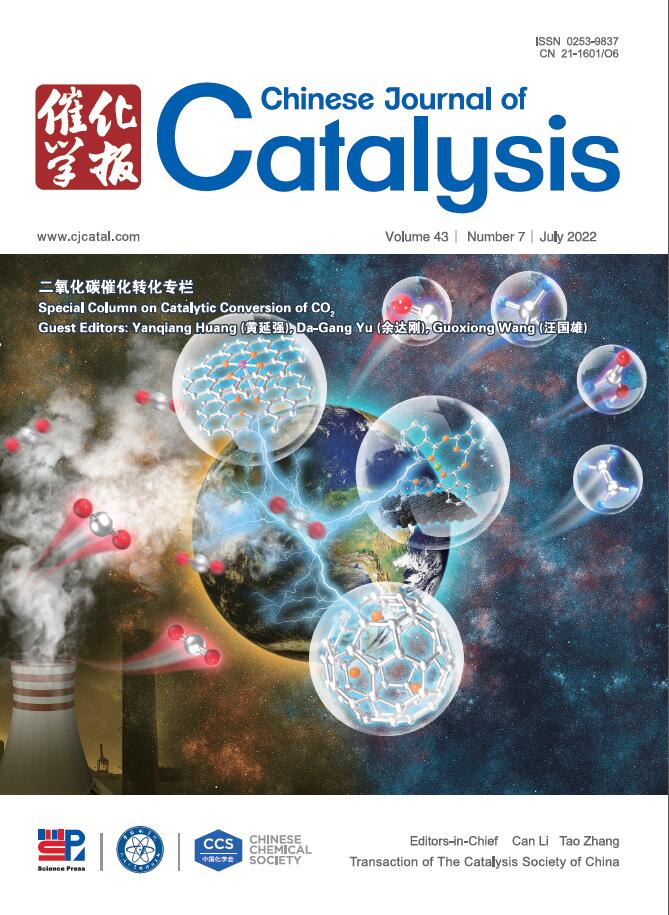Recent advances of covalent organic frameworks-based photocatalysts: Principles, designs, and applications
IF 15.7
1区 化学
Q1 CHEMISTRY, APPLIED
引用次数: 0
Abstract
Covalent organic frameworks (COFs) semiconductor materials have garnered significant attention in solar to chemical energy conversion owing to their unique properties, including structural tunability, pre-design capability, large surface area, abundant pore structures, high crystallinity, excellent chemical stability, suitable energy-band structure, fast charge carrier transfer and so on. These intrinsic features endow COFs with the remarkable candidates for various photocatalytic applications including photocatalytic H2 generation from water reduction, CO2 reduction, degradation of organic pollutants, N2 fixation, H2O2 evolution, and even organic synthesis. Here, this review comprehensively summarizes the recent advancements in COF-based materials for the above photocatalytic reactions, including the historic overview of the COF in the photocatalysis field, the fundamentals and design philosophy of COF-based photocatalysts, the advances of synthesis strategies, the structural characteristics and diversities, the practical applications in various photocatalytic fields as well as the challenges and future development direction in terms of COFs material and application perspectives. We sincerely hope this review can offer symbolic guidelines for future development COF semiconductor materials in this promising field.
基于共价有机框架的光催化剂的研究进展:原理、设计和应用
共价有机框架(COFs)半导体材料具有结构可调节性、预设计能力强、比表面积大、孔隙结构丰富、结晶度高、化学稳定性好、能带结构合适、载流子转移快等独特性能,在太阳能化学能量转换领域受到广泛关注。这些固有特性赋予了COFs各种光催化应用的卓越候选材料,包括水还原光催化制氢、CO2还原、有机污染物降解、N2固定、H2O2演化,甚至有机合成。本文综合综述了用于上述光催化反应的COF基材料的最新进展,包括COF在光催化领域的历史概况、COF基光催化剂的基本原理和设计理念、合成策略的进展、结构特点和多样性。介绍了COFs在各个光催化领域的实际应用,以及在材料和应用前景方面面临的挑战和未来的发展方向。我们真诚地希望这一综述能够为未来COF半导体材料在这一前景广阔的领域的发展提供象征性的指导。
本文章由计算机程序翻译,如有差异,请以英文原文为准。
求助全文
约1分钟内获得全文
求助全文
来源期刊

Chinese Journal of Catalysis
工程技术-工程:化工
CiteScore
25.80
自引率
10.30%
发文量
235
审稿时长
1.2 months
期刊介绍:
The journal covers a broad scope, encompassing new trends in catalysis for applications in energy production, environmental protection, and the preparation of materials, petroleum chemicals, and fine chemicals. It explores the scientific foundation for preparing and activating catalysts of commercial interest, emphasizing representative models.The focus includes spectroscopic methods for structural characterization, especially in situ techniques, as well as new theoretical methods with practical impact in catalysis and catalytic reactions.The journal delves into the relationship between homogeneous and heterogeneous catalysis and includes theoretical studies on the structure and reactivity of catalysts.Additionally, contributions on photocatalysis, biocatalysis, surface science, and catalysis-related chemical kinetics are welcomed.
 求助内容:
求助内容: 应助结果提醒方式:
应助结果提醒方式:


